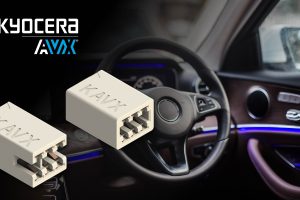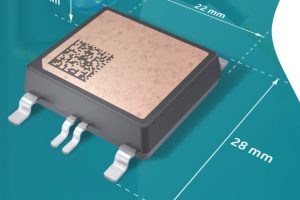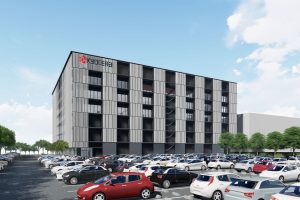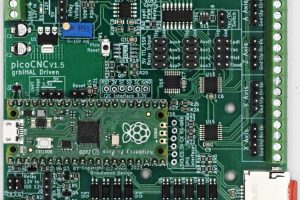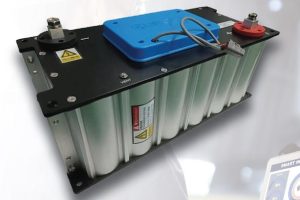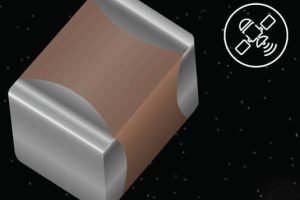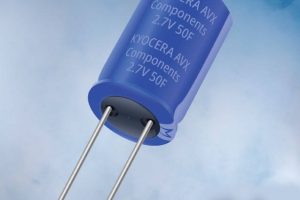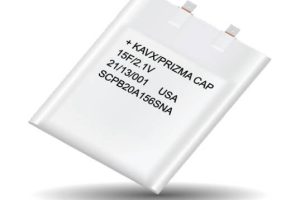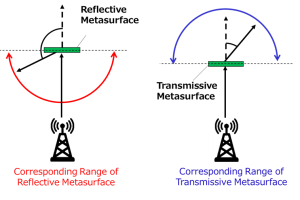Kyocera has come out with a series of double-ended linear card-edge connectors with spring contacts. The 9159-7X0 Series adds to the KYOCERA AVX portfolio of linear card-edge connectors by being the first to feature its beryllium copper spring contact system, which aims to deliver high electrical and mechanical reliability, high signal integrity, and high durability in harsh environment applications. This ...
Tag Archives: Kyocera
Top-cooled industrial 650V 20A silicon carbide rectifier module
Nexperia has teamed up with Kyocera AVX to develop an industrial 650V 20A silicon carbide rectifier module. It is aimed at “high frequency power applications ranging from 3kW to 11 kW power stack designs [in] industrial power supplies, electric vehicle charging stations and on-board chargers,” according to Nexperia. It “has a low inductance package and it has been qualified to ...
Kyocera centre to consolidate engineering and development
Kyocera is to consolidate product engineering and development in a new centre at its Shiga Yasu Campus. The aim of new centre is to, strengthen manufacturing capabilities through stronger collaboration among Kyocera’s diverse business divisions, while training new generations of engineering leaders. Drastic changes in the business environment now compel manufacturers to implement new strategies for raising productivity and improving ...
Most Read articles – Raspberry Pi Pico, Flash memory award, Supercapacitor banks
There's an EV merger, a Mannerisms cautionary tale, Kyocera's KAVX057 supercapacitor module, Lancaster University winning an awards at the Flash Memory Summit, and PicoCNC, the Raspberry Pi Pico-based CNC control board...
Supercapacitor banks for energy storage
Kyocera AVX has announced a range of high-capacity supercapcitor banks with low leakage. “SCM Series supercapacitor modules are rated for operating temperatures from -40°C to +65°C and lifetimes that extend to millions of cycles,” according to the company. “They are also lead-free compatible, RoHS compliant, and compliant with the UL 810A standard for electrochemical capacitors.” Initially there are five versions: ...
High-rel NP0 ceramic capacitors for military use
Kyocera has announced NP0 dielectric MLCCs (multi-layer ceramic capacitors) approved to the Defense Logistics Agency Qualified Products Database (DLA QPD) for high-reliability military applications. “The new MIL-PRF-32535 BME NP0 MLCCs have higher CV capabilities than standard surface-mount PME MLCCs qualified to military and aerospace specifications and are currently available in M and T reliability levels and 0402, 0603, and 0805 ...
Automotive-qualified supercaps
Kyocera has introduced AEC-Q200 qualified supercapacitors for automotive use. To be found in the company’s SCC series, there are four capacitors (diameter x length): 35F 3V SCCU30E356SRBQ (16 x 30mm) 50F 3V SCCV40E506SRBQ (18 x 40mm ) 100F 2.7V SCCV60B107SRBQ (18 x 60mm) 100F 3V SCCV60E107SRBQ (18 x 60mm) where the final Q indicates AEC-Q200 qualification “They can be used ...
Pouch-style supercapacitors reinforce batteries
Kyocera AVX has introduced a series of pouch-style supercapacitors for decreasing current surges in batteries. Called the SCP Series and branded PrizmaCap, they “can be used on their own as system power backup devices, replacing batteries in some cases, or they can be used in conjunction with primary or secondary batteries”, according to distributor Anglia, which is stocking the parts. ...
Kyocera to build new MLCC plant
At a signing ceremony yesterday with Kagoshima Governor Koichi Shiota, Kirishima City Mayor Shinichi Nakashige, and Kyocera officials, the company undertook to construct a new production facility at its Kokubu Plant Campus in Kagoshima, Japan. Construction will begin in February 2023 and the plant will begin operation in May 2024. The new plant will be located on the current site ...
Transmissive Metasurface redirects cellular signals
Kyocera has developed a Transmissive Metasurface technology that can redirect wireless network signals in a specific direction to improve the coverage area and performance of 5G and eventually 6G networks. The Transmissive Metasurface will help deliver high-frequency millimeter-wave 5G and 6G to places where communication is impossible due to obstacles, expanding service areas beyond the capability of conventional Reflective Metasurface ...
 Electronics Weekly Electronics Design & Components Tech News
Electronics Weekly Electronics Design & Components Tech News
